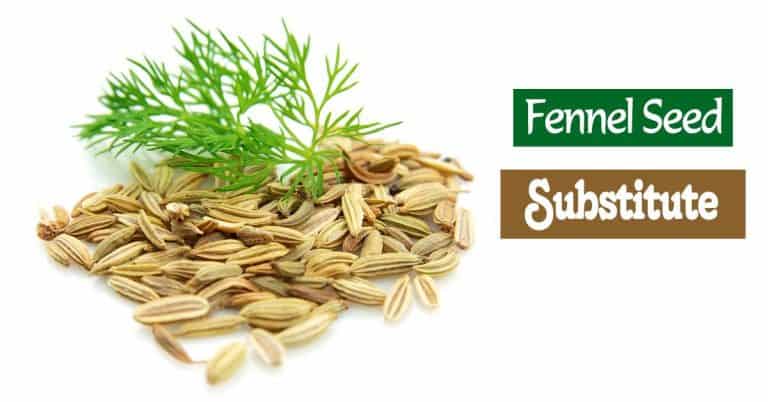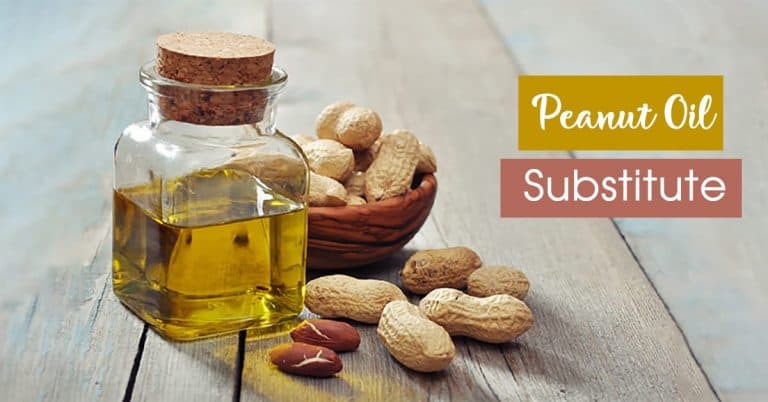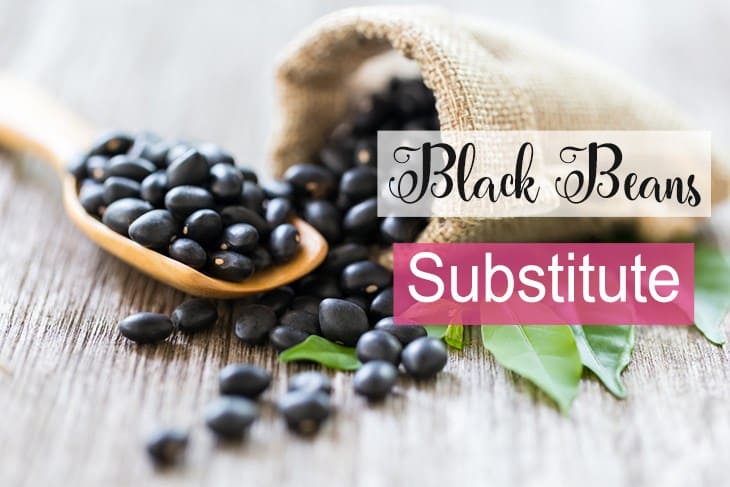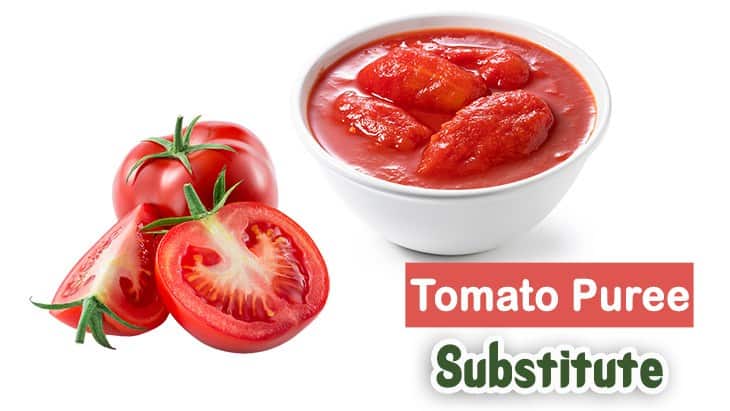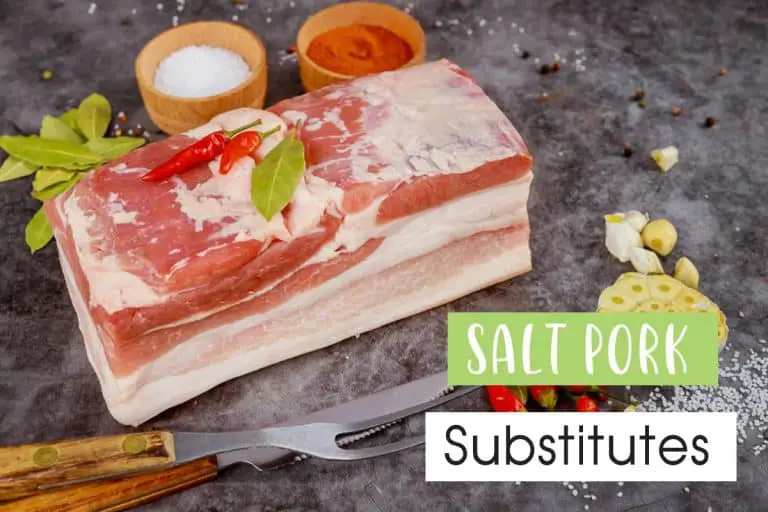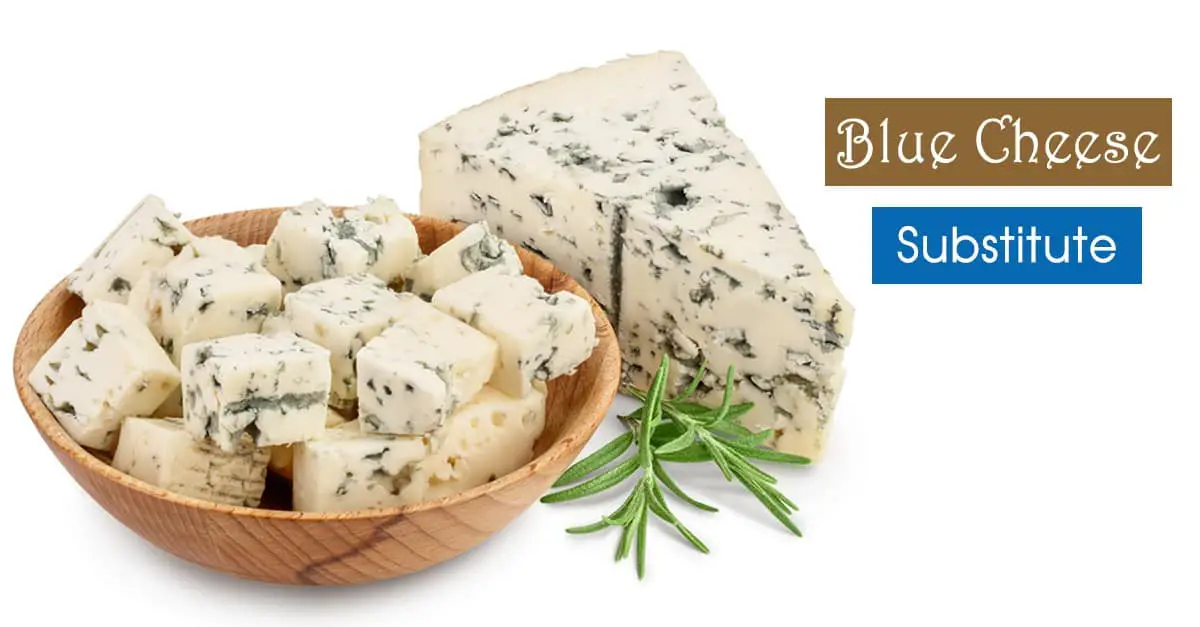
Are you struggling to find an ingredient to replace blue cheese? Then, take it easy with 11 ideas to substitute for blue cheese on our list.
This exceptional cheese, with a prolonged history since the 7th century, has won our hearts for its exquisite taste. But its strength is also its weakness. Some find its scent disgusting or even describe it as a vomit odor.
Whether you lack it or refuse it, we’ve got you all covered with our alternatives, even for those who can’t handle its smell.
Top 11 Ideas To Substitute For Blue Cheese
1. Gorgonzola
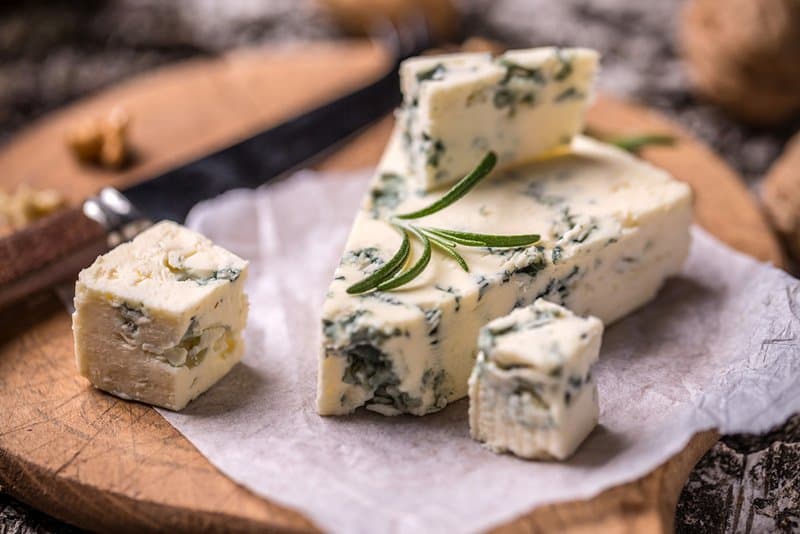
Interestingly enough, Gorgonzola falls under the blue cheese umbrella, typically spotted with Penicillium mold. Its origin traced back to 879 A.D in an Italian town of the same name.
This ancient cheese comes with a soft and crumbly texture, delivering a sharp, nutty, and spicy flavor profile. Even its putrid smell resembles blue cheese, so switching between the two won’t cause any noticeable change.
With this distinct taste, Gorgonzola can work well in cookies, pizzas, pasta, risotto, or steak recipes. You can also pair it with high-sugar food like jams, honey, or chocolate.
When it comes to favorite drink partners of Gorgonzola, sparkling or red wine take the crown. This ultimate match will inspire you with a spicy eruption, sweeping over every taste bud and beautifully ending with a sweet note.
Gorgonzola provides you with a great amount of vitamin B2, B6, and B12, important for the immune and nervous systems. Also, consuming it can prevent artery inflammation and lower cholesterol levels, reducing the risk of cardiovascular diseases.
2. Stilton
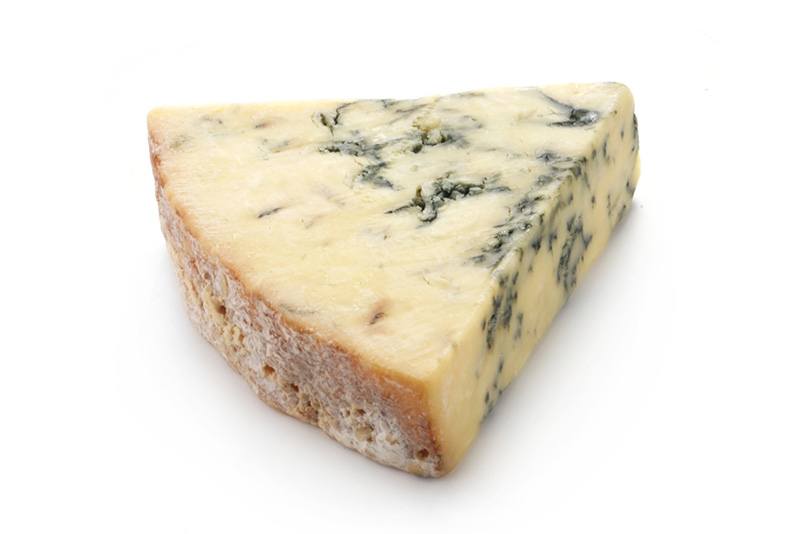
Like Gorgonzola, Stilton is also from the blue cheese family. No one knows exactly when this godsend was born, yet the earliest reports about it were in the 17th century in a charming village named Stilton of England.
Maybe villagers had produced it a long, long time ago, but no one knew exactly when. Learning about cheese is always mysterious that leads us from this surprise to another.
Stilton has a streaked interior like marble with a crumbly and soft texture. Each bite will drive you from a sharp sweetish, nutty, and salty note to a pungent aftertaste. This special flavor profile is just well-fitted in the place of blue cheese.
This English cheese brings an undeniable kick of flavor to sandwiches, salads, pizzas, burgers, risottos, and pasta. Apples, walnuts, and honey are also good companions of Stilton.
Thanks to its high calcium content, this ingredient helps you achieve healthy bone density. Even better, calcium in Stilton may link to anti-obesity mechanisms by reducing the fat in your body.
3. Maytag
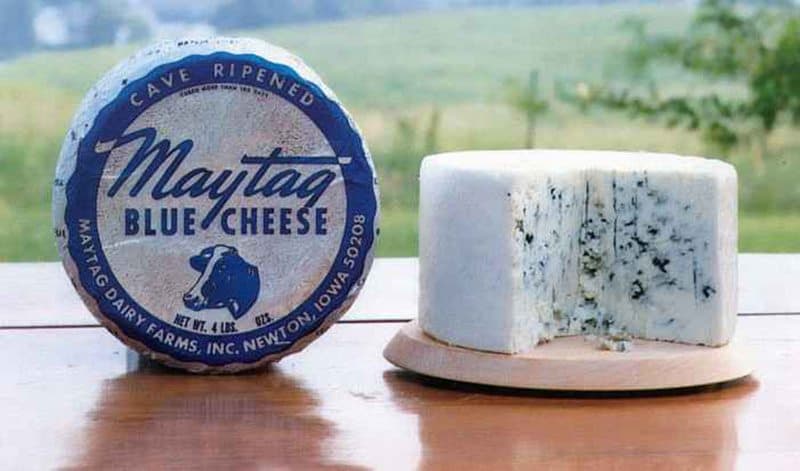
If you aim at a more budget-friendly blue cheese, you can’t go wrong with Maytag cheese. Born in the sun-kissed Maytag Dairy Farm, it has become a legacy, conveying the juice of grass, sunlight, and water there.
Being conventionally handcrafted, Maytag’s taste is incredibly delicate with a nutty, fruity, and spicy punch, perfectly served in a moist and creamy texture. You can replace blue cheese with Maytag in burgers, salads, soups, pasta, or steak.
As we age, we are prone to more health issues, and arthritis seems to be the most common. Maytag comes with anti-inflammatory properties, supporting in minimizing joint inflammation and relieving arthritis pain.
Adding this element to your diet reduces the likelihood of suffering from arthritis and also aids in combating it.
4. Danish

We often recognize this dairy product under the trademark Danablu. As the name implies, Denmark is its birthplace, but you will find it widely available in the North American market.
This semi-soft cheese is also a blue type with distinctive blue veins in its ivory interior. The mature product brings you a sharp, tangy, pungent, and salty taste profile, lingering with a buttery trace.
You are free to substitute Danish in salads, pasta, sauces, or soups. The destined partners of this cooking ingredient are steak, seared beef, fresh fruit, and dark chocolate.
Danish possesses a beneficial compound called spermidine. The presence of this substance links to a positive impact on cardiac muscle cells to keep you away from cardiovascular disease. Consuming Danish also helps manage visceral fat levels and prevents obesity.
5. Roquefort
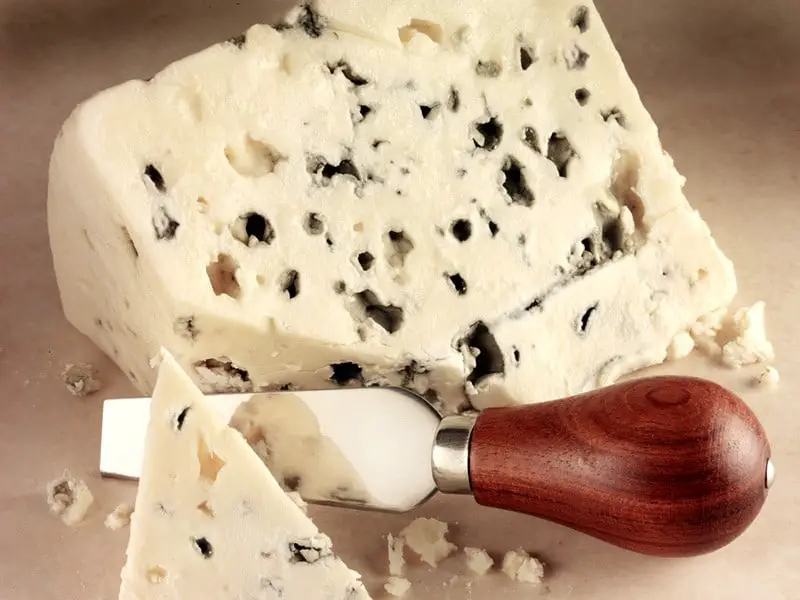
If you are a blue cheese lover, you must have heard of Roquefort. This variation comes from France and has an interestingly romantic history like its home country.
Legends has it that a man snacking on cheese from sheep’s milk and bread saw a fascinating woman passing by. He promptly approached her and left his meal in a cool cave. And after several months, he came back and discovered the first Roquefort.
This blue-veined cheese serves you a moist texture with a tangy, salty flavor and a roasty hint of dark chocolate. You can replace blue cheese with Roquefort in salads, soups, dips, sauces, steak, veggies like potatoes, kale, mushrooms, broccoli, and nuts like hazelnuts, almonds, or walnuts.
If you are still reluctant about this substitute, its health perks will make it in your next shopping cart. As you may know, all blue cheese comes with a huge amount of calcium for better bone health, dental health, and bone-related issues like arthritis.
But Roquefort is also packed with vitamin A, D, sodium, zinc, and potassium to boost your immune system and alleviate the risk of various diseases and infections.
6. Feta

Although the name Feta was first recorded in the 17th century, its evidence appeared in far more ancient documents, somewhere in the 8th century B.C. Back in the time, the Greeks made Feta cheese from pure goat’s or sheep’s milk, or both.
Feta’s flavor journey starts with a rich, tangy, and salty tone and ends with a citric note, though it’s hard to notice. Aged Feta makes a better blue cheese alternative since it becomes more peppery and buttery.
You can toss this Greek cheese in pies, salads, spaghetti, pasta, pizzas, dips, or sauces. You will want to utilize this cheese in association with veggies, fish, chicken, potatoes, and eggs.
We find that shredding some Feta on the roasted asparagus is a wise combination. Feta brings a nicely tangy balance that glorifies the fresh, sweet, and earthy flavors of the veggie. Other asparagus substitutes also work well.
This cheese offers more calcium than many other types, helping you promote healthy teeth and bones. However, we don’t recommend using Feta when you are cooking for pregnant women. According to a study, it may have bacteria called Listeria that may harm the unborn child.
7. Halloumi
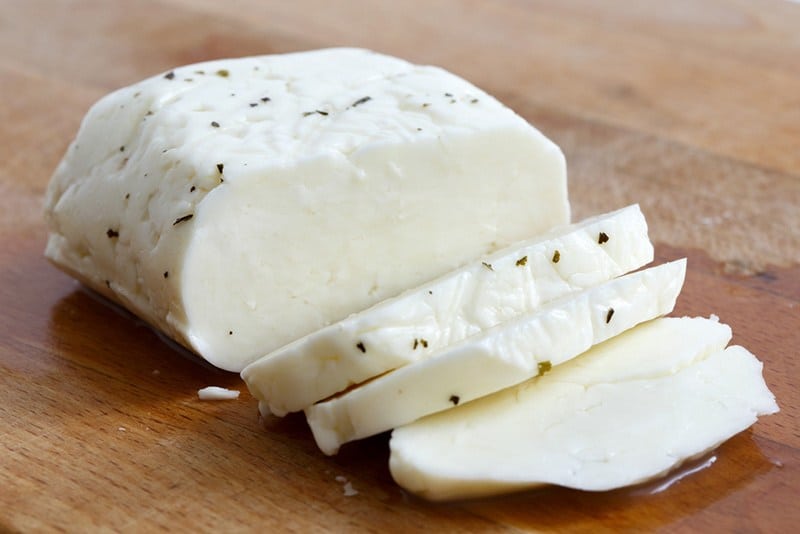
Now, let’s take a trip to the Middle East to discover Halloumi cheese. Traced back in the Medieval Byzantine period, Halloumi came into this world from an island nation named Cyprus.
This cheese is unripened and semi-hard, prepared from a combination of sheep’s milk and goat milk, sometimes cow’s milk. The final product is strongly salty and tangy, somewhat similar to the blue type. However, it fails to fulfill the spicy tone of the original ingredient.
Other than tossing it in salads or burgers, you can use Halloumi in grilled or fried recipes, thanks to its higher melting point compared to blue cheese.
Halloumi cheese is an abundant source of calcium, meeting up to 70% of the recommended daily intake. You can also benefit from its selenium, zinc, magnesium, vitamin A, and B.
8. Goat Cheese
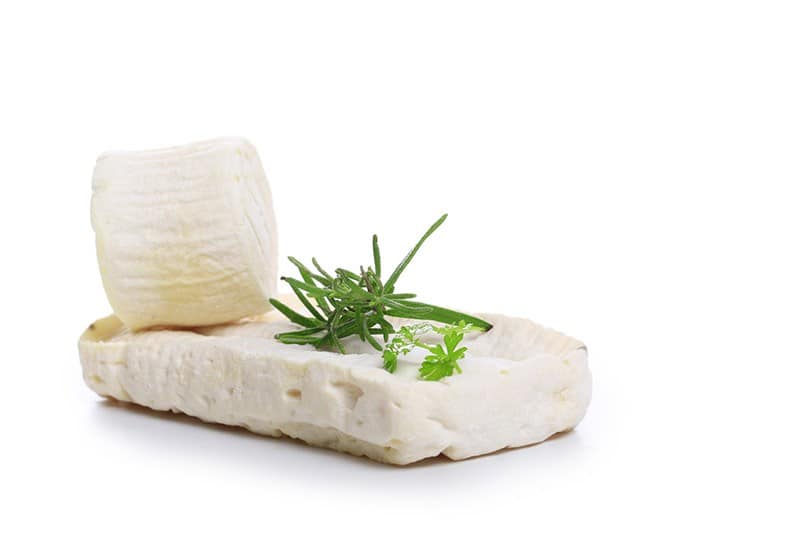
As you can guess from the name, this dairy product contains 100% goat’s milk originating from the beautiful Loire Valley in France. With thousands of years of development, goat cheese still gains a significant position in cheese fans’ hearts.
Goat cheese resembles blue cheese in the tangy taste and creamy texture, but it still distinguishes with an earthy note and the so-called “goatyness,” lingering with a sweet aftertaste. This substitute is more pleasant for those with a delicate palate and a sensitive nose.
Goat cheese is an easy-going ingredient since it pops up in many recipes such as pasta, waffles, pancakes, cereals, pizzas, salads, cheeseballs, to name a few. Also, it’s a wise choice to combine this cheese with beets, asparagus, tomatoes, eggs, hot peppers, sweet corn, and hot peppers.
A serving of this French cheese provides 6 grams of protein plus a combination of phosphorus, copper, and calcium – essential nutrients for healthy bones.
Not to mention, goat cheese offers healthy fats like medium-chain fatty acids, which improve satiety to promote weight loss.
9. Aged Cheddar
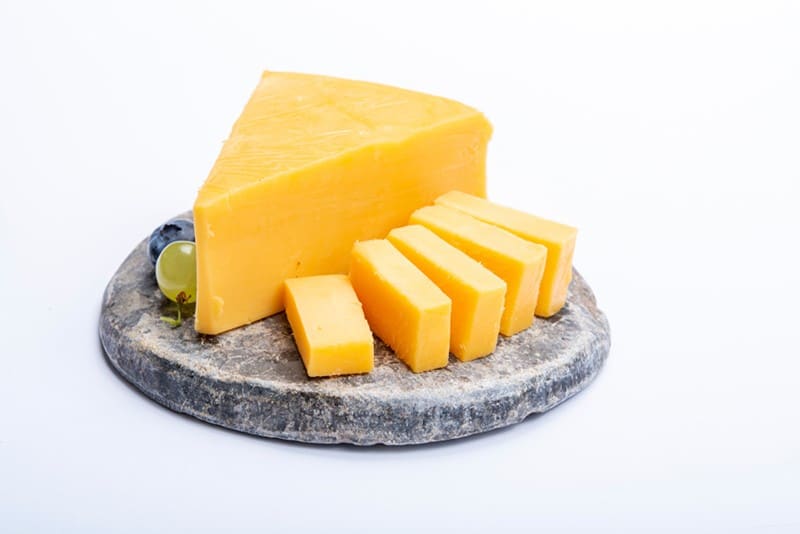
The Cheddar we see today comes with a long history since its birth in the 12th century. You’ll be surprised to know that Cheddar was made by accident.
Back in the time, in a lovely small town called Cheddar of England, farmers usually stored milk in caves to keep it cool on hot days. One day, a milk pail was unintentionally left in the cave and happened to become a golden cheese block. The myth behind its origin is like a godsend, isn’t it?
Its body looks firm, but believe us when we say that don’t let the appearance fool you; the melt-in-the-mouth texture will give you an eye-opening experience.
You may wonder what the similarity between blue cheese and Cheddar is. In fact, well-aged Cheddar delivers a sharp flavor comparable to the original recipe, driving you from a buttery and nutty touch to a lingering aftertaste.
Even better, some variations like Habanero Cheddar cheese are more flavorful with added onions, chili, and black pepper, providing you a spiciness perfect for a blue cheese alternative. You can utilize it in cookies, soups, waffles, sandwiches, salads, or top it on any baked dish.
Apart from calcium and protein, Cheddar is an excellent source of vitamin K. It is essential for bone and heart health, preventing calcium from building up in the walls of our veins and arteries.
10. Queso Fresco
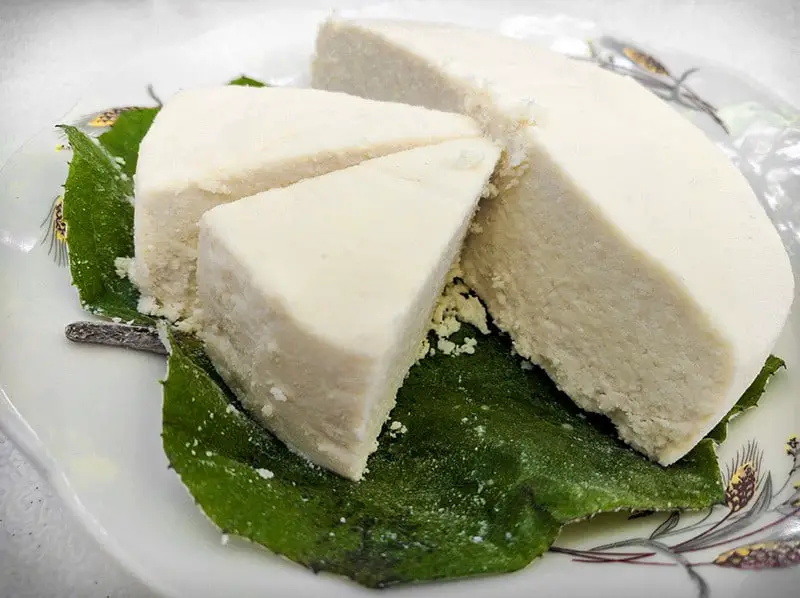
Queso Fresco stands for “fresh cheese” in Spanish. Though it originates in Spain, we usually label it as a staple in Mexican cuisine. Cow’s milk or goat milk is the main element of Queso Fresco, along with lemon juice, rennet, and vinegar.
Queso Fresco comes with a tangy and salty flavor and a smell like sour milk. It sounds awkward at first, but once you get used to it, you’ll stick to it for sure. Apart from appearing in Mexican recipes, you can use it in fruit salads, steaming-hot soups, cured meat, or as a stuffing.
A lower fat and sodium index makes it an ideal addition to your healthy diet rather than other aged cheese.
11. Ranch Dressing
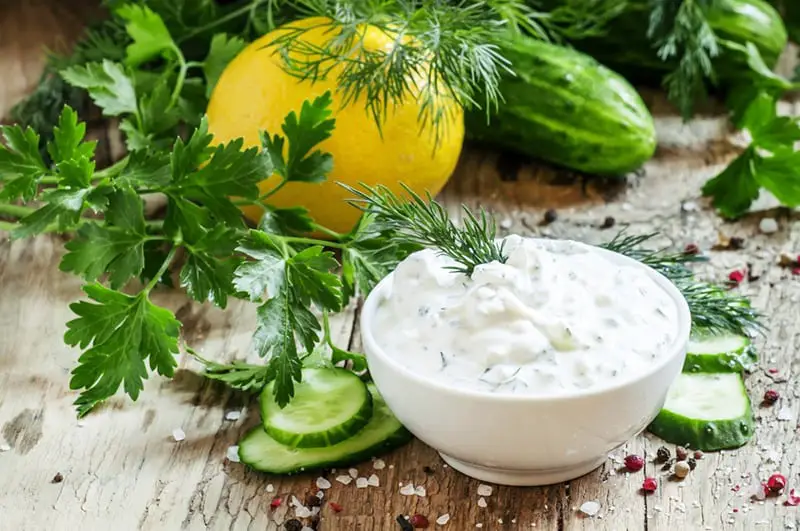
Are you searching for a blue cheese substitute as you can’t stand its smell? Here comes your savior – the ranch dressing. This dressing gives you a well-balanced combination of buttery, salty, spicy, and sour hints with herby and fresh aroma.
It’s best to add this flavorful sauce to salads, chicken nuggets, pizzas, sandwiches, French fries, and many more. The best thing is, you can always get homemade ranch dressing with simple steps. We will provide a thorough guide for your reference below.
Vitamin K is the superstar of this dressing, which does wonder for your bone health. When your body is suffering from vitamin K deficiency, the blood vessels feeding your heart become narrower and stiffer, posing potential dangers to your health.
Frequently Asked Questions
1. How To Store Blue Cheese?
Knowing how to store this common ingredient properly will wipe away your worry about lacking it for quite some time.
As a rule of thumb, always let the cheese breathe by not tightly wrapping or storing it in air-tight containers in your fridge. Living organisms on the surface need air to survive and maintain the flavor.
In this case, foil, wax paper, or parchment is recommended. This way can keep your beloved food in good condition for about 4 weeks. Cutting the block into small pieces and storing them in the freezer helps the cheese last even longer.
2. How To Make A Vegan Substitute For Blue Cheese?
Being a vegan doesn’t mean that your meal is always full of green dishes and lacks flavor. Now, you can delight your diet with homemade vegan blue cheese following our easy guide.
Step 1: Prep work
For ingredients, we need:
- 1-1/2 cups of raw peeled almonds
- 2-1/2 cups of water
- Lime juice (squeezed from 1mlarge lime)
- 1 tbsp of salt
- 1-1/2 tbsp of cornstarch
- 1-1/2 tbsp of Agar-agar powder
If you happen to have just unpeeled almonds, blanch them in boiling water for 5 to 10 minutes. And peeling them is a piece of cake.
Step 2: Blend
Put all the almonds, lime juice, 1 cup of water, and 1 tbsp of salt into the blender. Blend the mixture until it’s super smooth and creamy.
Step 3: Make Agar-agar sauce (it’s not really a sauce anyway)
Add the leftover water (1-1/2 cups), cornstarch, and Agar-agar powder in a pot, and then mix them very well.
Until you see a milk-like color, let’s turn on the heat. You are not supposed to leave your stove unattended but babysit and constantly mix it. You know it’s ready when the mixture turns thick and doesn’t stop bubbling.
You will want to pour this sauce into the blended mixture in step 1 right after turning off the fire since it coagulates quite fast. Then, mix it thoroughly so that it is well incorporated.
Step 4: Finish
Prepare a cheesecloth. Dampen it, and fix it into a bowl or anything you find handy. Dump the mixture into the bowl and cover it with the cloth, then let it completely cool down. Finally, you put it in the fridge for 24 hours, and your delish vegan protein is on the way.
3. How To Make Ranch Dressing At Home?
As promised, here is the thorough instruction for homemade ranch dressing. You will be surprised how easy it can be.
Ingredients:
- 1/2 cup of mayonnaise
- 1/4 cup of sour cream
- 2 tsp of dried chives
- 1/2 tsp of dried dill
- 1/2 tsp of dried parsley
- 1/2 tsp of garlic powder
- 1/2 tsp of onion powder
- 1/4 tsp of salt
- 1/8 tsp of pepper
- 3/4 cup of buttermilk
Step 1: In a jar or bowl, whisk sour cream, mayonnaise, and buttermilk together until it’s smooth.
Step 2: Add chives, parsley, dill, onion powder, garlic powder, pepper, and salt. Mix them well.
Step 3: Add some fresh lemon juice and whisk the blend again. If you use a bowl, now pour the mixture into a jar and store it in the fridge for at least 4 hours or overnight for the best. The flavors will come together, and your ranch dressing is ready.
Conclusion
Cooking is creating new things, and there are no hard and fast rules when it comes to devising recipes. So, you can always find a proper substitute for blue cheese to your liking.
Sometimes, a slight adjustment in the recipe can cause a twist in its taste. Feel free to experiment with all the 11 suggestions above and find out your favorite.
Related Post: Substitute For Mozzarella: 12 Best Choices You Should Know


